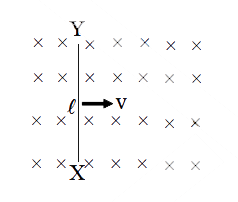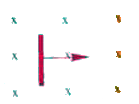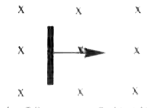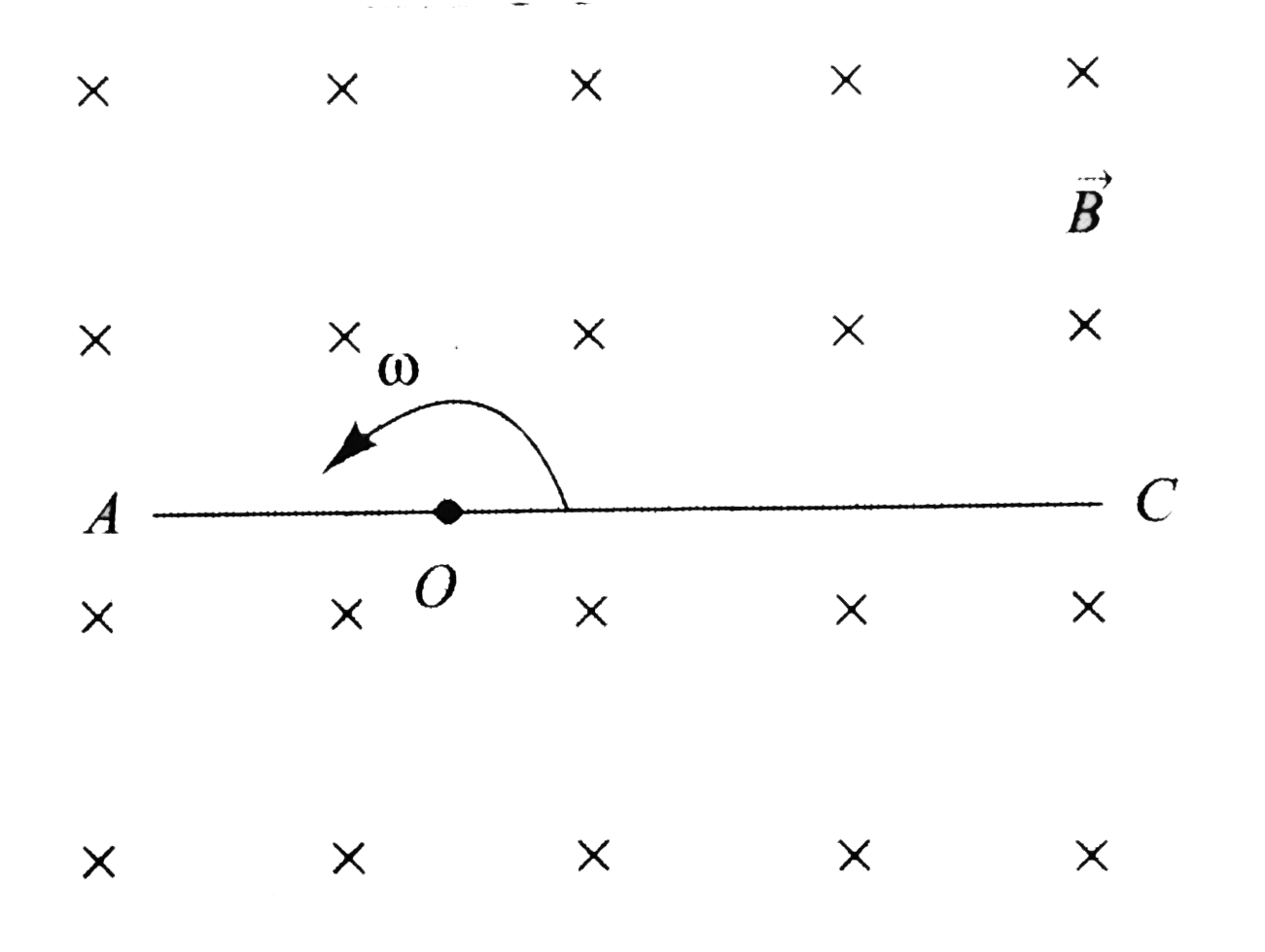A glass rod of length l moves with velocity v in a uniform magnetic field B. What is the e.m.f induced in the rod?
To solve the problem of finding the induced electromotive force (e.m.f) in a glass rod of length l moving with velocity v in a uniform magnetic field B, we can follow these steps:
1. Understand the Setup:
- We have a glass rod of length l moving with a velocity v in a magnetic field B. The direction of the magnetic field is perpendicular to the direction of the rod's motion.
2. Identify the Nature of the Rod:
- The problem states that the rod is made of glass. Glass is an insulator, which means it does not have free electrons that can move and carry charge.
3. Apply Faraday's Law of Electromagnetic Induction:
- According to Faraday's law, the induced e.m.f (E) in a conductor moving through a magnetic field is given by the formula:
E=B⋅l⋅v
- However, this formula is applicable only if the material is a conductor.
4. Conclusion Based on the Material:
- Since the glass rod is an insulator, it does not allow the flow of electric current. Therefore, even though the rod is moving through a magnetic field, no e.m.f will be induced in the glass rod.
5. Final Answer:
- The induced e.m.f in the glass rod is:
E=0V
- We have a glass rod of length l moving with a velocity v in a magnetic field B. The direction of the magnetic field is perpendicular to the direction of the rod's motion.
- The problem states that the rod is made of glass. Glass is an insulator, which means it does not have free electrons that can move and carry charge.
- According to Faraday's law, the induced e.m.f (E) in a conductor moving through a magnetic field is given by the formula:
E=B⋅l⋅v
- However, this formula is applicable only if the material is a conductor.
- Since the glass rod is an insulator, it does not allow the flow of electric current. Therefore, even though the rod is moving through a magnetic field, no e.m.f will be induced in the glass rod.
- The induced e.m.f in the glass rod is:
E=0V
Topper's Solved these Questions
- BOOK - AAKASH SERIESCHAPTER - ELECTROMAGNETIC INDUCTIONEXERCISE - Problems (Level-I)28videos
ELECTROMAGNETIC INDUCTION
- BOOK - AAKASH SERIESCHAPTER - ELECTROMAGNETIC INDUCTIONEXERCISE - Problems (Level-II)14videos
ELECTROMAGNETIC INDUCTION
- BOOK - AAKASH SERIESCHAPTER - ELECTROMAGNETIC INDUCTIONEXERCISE - Exercise (Short Answer Questions)21videos
ELECTROMAGNETIC INDUCTION
- BOOK - AAKASH SERIESCHAPTER - ELECTRIC FIELD AND POTENTIALEXERCISE - PROBLEMS (LEVEL-II)26videos
ELECTRIC FIELD AND POTENTIAL
- BOOK - AAKASH SERIESCHAPTER - ELECTROMAGNETIC WAVESEXERCISE - EXERCISE -II22videos
ELECTROMAGNETIC WAVES
Similar Questions
A small conducting rod of length l, moves with a uniform velocity v in a uniform magnetic field B as shown in fig __
 View Solution
View SolutionA small conducting rod of length l, moves with a uniform velocity v in a uniform magnetic field B as shown in fig __

A. Then the end X of the rod become positively charged
B. The end Y of the rod become positively charged
C. The entire rod is unevenly charged
D. The rod become hot due to joule heatingView SolutionA rod AB moves with a uniform velocity v in a uniform magnetic field as shown in figure
 View Solution
View SolutionA rod of length l is moving velocity v "in magnetic field" b as seen in . Find the emf induced in all three cases.
(a) View Solution
View SolutionA conductor of length 0.1m is moving with a velocity of 4m/ s in a uniform magnetic field of 2T as shown in the figure. Find the emf induced ?
 View Solution
View SolutionA conductor of length 0.1m is moving with a velocity of 4m/s in a uniform magnetic field of 2T as shown in the figure. Find the emf induced ?
 View Solution
View SolutionA wire of length 50 cm moves with a velocity of 300 m/min, perpendicular to a magnetic field. If the emf induced in the wire is 2 V, then the magnitude of the field in tesla is
View SolutionA uniform conducting rod of length I is moving with speed v0 in a uniform transverse magnetic field B0 as shown in figure. The emf developed across the two ends of the rod will be
 View Solution
View SolutionA conducting rod AC of length 4l is rotated about point O in a uniform magnetic field →B directed into the plane of the paper. AO=landOC=3l. Find VA−VC.
 View Solution
View SolutionA metal rod of length l cuts across a uniform magnetic field B with a velocity v. If the resistance of the circuit of which the rod forms a part is r, then the force required to move the rod is
View Solution

